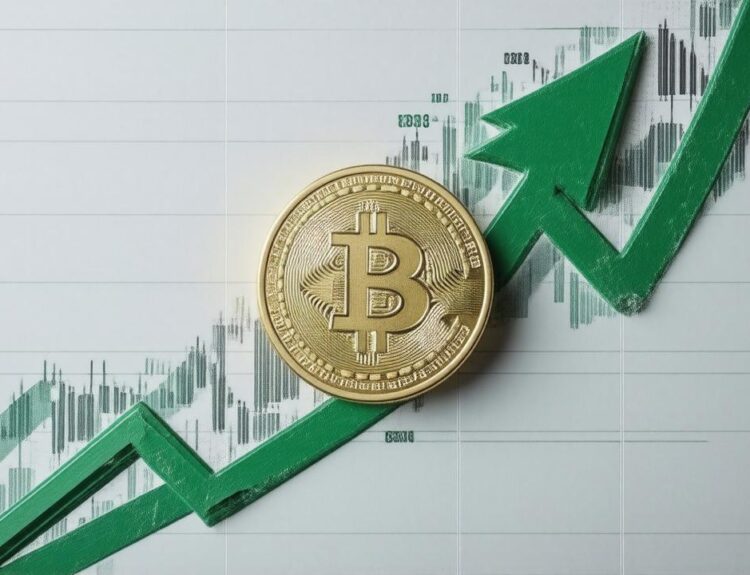“`html
Bitcoin, altcoins, and U.S. stock markets experienced declines on Wednesday following the release of weak economic data from the United States. The downturn in risk assets has raised concerns among investors, particularly those tracking cryptocurrencies and macroeconomic trends.
Bitcoin and Altcoins See Significant Declines
The Bitcoin price dropped below $94,000, a notable decrease from this month’s high of $96,000. Popular altcoins like Ripple (XRP), Pepe (PEPE), and VeChain (VET) also saw sharp declines, with losses exceeding 5% in the last 24 hours. These price movements reflect broader concerns within the cryptocurrency market.
The total market capitalization of all cryptocurrencies fell by 3.6% during the same period, dropping to $3.03 billion. In parallel, U.S. stock indices also turned negative. The Dow Jones Industrial Average declined by approximately 150 points, while the tech-heavy Nasdaq 100 fell around 170 points.
Weak U.S. Economic Data Sparks Concerns
The sell-off in cryptocurrencies and stocks followed the release of several disappointing U.S. economic indicators. A recent report revealed that the private sector added only 62,000 jobs in April, significantly below the expected 114,000 and a steep drop from March’s 147,000. This slowdown in job creation has fueled concerns about a weakening labor market.
Additionally, data showed that the U.S. economy contracted by 0.3% in the first quarter, reversing the 2.4% growth reported in the fourth quarter of the previous year. The contraction highlights growing economic challenges as inflation remains above the Federal Reserve’s 2.0% target. In March, the closely watched Personal Consumption Expenditure (PCE) index slowed to 2.3%, slightly above the expected 2.2%.
Consumer sentiment also took a hit, with the Conference Board reporting that consumer confidence plunged to its lowest level in years. These factors have heightened fears of a potential U.S. recession, impacting both traditional and digital asset markets.
Expert Insights on the Economic Outlook
“The decline in GDP in the first quarter overstates the economy’s weakness, but it is weak. Most worrisome is the weak growth in consumer spending, even with the boost to buying power,” said Mark Zandi, senior economist at Moody’s.
Zandi also warned that the U.S. economy is teetering on the edge of a recession, a sentiment echoed by many analysts. The potential for additional tariffs and geopolitical tensions adds further uncertainty to the economic outlook.
Potential Silver Lining for Cryptocurrencies
While economic challenges persist, there may be a silver lining for Bitcoin and altcoins. A potential U.S. recession could lead to reduced consumer spending, helping to ease inflationary pressures. If the Federal Reserve responds to recessionary trends by cutting interest rates, cryptocurrencies could benefit significantly.
Historically, cryptocurrency prices have rallied during rate-cutting cycles. For instance, during the COVID-19 pandemic, Bitcoin and other altcoins surged as the Federal Reserve slashed interest rates to near-zero levels and implemented aggressive quantitative easing measures. A similar scenario could provide a bullish catalyst for the crypto market in the near future.
Additionally, U.S. bond yields dropped following the release of GDP data, signaling a shift in investor sentiment toward safer assets. This trend may further support interest in cryptocurrencies as an alternative investment class during periods of economic uncertainty.
Key Takeaways for Investors
Market participants should closely monitor developments in the U.S. economy and Federal Reserve policy. Key points to consider include:
- Tracking inflation data, particularly PCE and CPI reports, for signs of easing price pressures.
- Observing Federal Reserve statements and potential shifts in interest rate policy.
- Paying attention to macroeconomic indicators, such as GDP growth and job creation, for broader economic trends.
For cryptocurrency investors, understanding the interplay between macroeconomic factors and digital asset prices is crucial. While short-term volatility may persist, historical trends suggest that rate cuts and economic stimulus measures could provide a supportive environment for cryptocurrencies.
Stay informed on the latest developments in cryptocurrency markets and global economic trends to make well-informed investment decisions.
“`





















